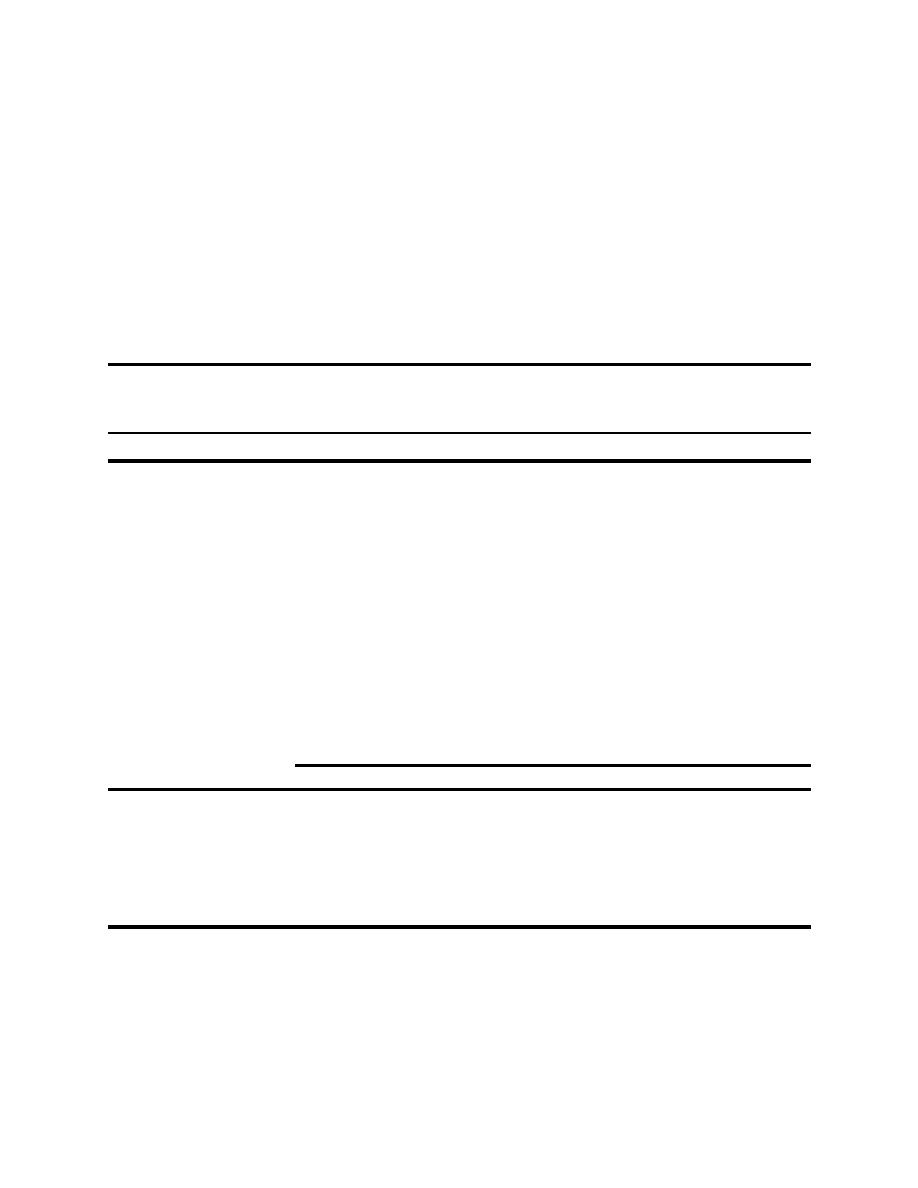
UFC 3-260-02
30 June 2001
(1) Subgrade evaluation and testing. A subgrade investigation was performed to evaluate the
support of the subgrade soil. Prior to the actual field survey, previous soils investigations, soils maps,
climatic data, etc., were collected to provide background information on the soil conditions. Soil borings
were then obtained to aid in evaluating the physical properties of the soil. Soil borings were taken at
60-meter (200-foot) intervals along the location of the proposed runway. Soil tests show that the
subgrade soil can be classified as CL according to the Unified Soil Classification System. Test results
show that there is no significant soil variation in the area for the new runway. Swelling soils are not a
problem at the site. Plate load-bearing tests were performed according to ASTM D 1196 to determine
the modulus of subgrade reaction (k value). Because of the uniform soils throughout the area, only three
plate load tests were taken. The results are summarized below:
Test Number
k Value, kPa/mm (pci)
1
27 (100)
2
41 (150)
3
35 (130)
Average = 34 kPa/mm (127 pci)
Because of the uniform soil conditions throughout the site, a design k value of the average of the three
tests, or 34 kPa/mm (127 pci), is used.
(2) Base course design. Results of a field survey and soil tests indicate that the subgrade soil
has a high degree of saturation and low permeability. Thus, very little bottom drainage is likely.
Therefore, a base material that is resistant to the detrimental effects of moisture should be used. A free-
draining granular base course may be used to increase the subgrade k value to the minimum acceptable
k value of 54 kPa/mm (200 pci) on top of the base course. According to Figure 8-1, a 203-millimeter
(8-inch) granular base course will raise the k value on top of the base to 54 kPa/mm (200 pci). To
prevent intrusion of subgrade fines into the base course, a filter course is included in the design.
(3) Traffic projections. The following tabulations summarize the projected traffic for the new
runway over a 20-year design period and the design gear loads.
Pass-Coverage Ratio
Coverages, 20 Years
Passes
Aircraft
20 Years
Channelized
Nonchannelized
Channelized
Nonchannelized
C-141
12,500
3.49
6.23
3,582
2,006
C-130
50,000
4.40
8.54
11,364
5,855
C-5
25,000
1.66
2.11
15,060
11,848
C-17
12,500
1.37
1.90
9,124
6,579
P-3
100,000
3.58
6.66
27,933
15,015
F-14
100,000
7.78
15.34
12,854
6,519
12-13



 Previous Page
Previous Page
